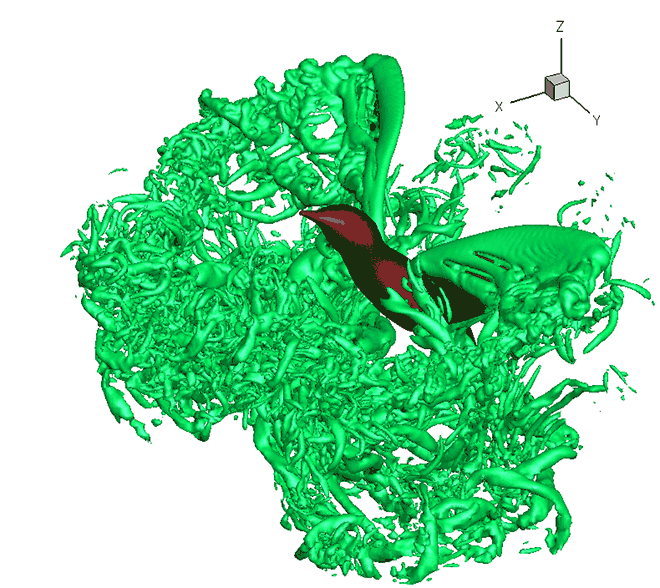This article has been corrected.
When they hover, hummingbirds move their wings more like a buzzing insect than a flapping bird. But, unlike tiny insects, hummingbirds are large enough to stir up the air more violently as they move. Now scientists have attempted to model exactly how hummingbird wings interact with the air as they hover.
To build the model, the scientists first put tiny dabs of non-toxic white paint at nine places on a ruby-throated hummingbird's wing. They then took high-speed video at 1,000 frames per second with four cameras while the bird hovered in front of an artificial flower. These dots were reference points for tracking key points on the bird's wing.
"We extracted and reconstructed the wing surface using the positions of those dots," said Haoxiang Luo, a mechanical engineer at Vanderbilt University in Nashville and coauthor of a study published July 8 in Royal Society Interface. Then Luo and colleagues put this reconstructed wing into software that models fluid dynamics, and customized it to be able to calculate the complicated turbulence a hummingbird creates with its frenetic pace—about 40 times per second—of flapping.
Hummingbirds don't fly like other birds. Most wings work according to Bernoulli's principle: Faster air rushing over the rounded topside tries to catch up with slower air on the flat bottom, creating low pressure on top that pulls the wing up. (panel A, in the graphic on the left).
Hummingbirds interact with the air in a more complex way. Their wings are relatively thin and can't take advantage of Bernoulli's principle on their own. But, as their wings move backward and forward to hover, vortices of air form and sort of stick to the leading edge of the wing. The wing and vortices together essentially act like a sweeping wing that creates low-pressure lift system like other birds' wings (panel B in the graphic).
With the model, the scientists confirmed previous estimates that about 75 percent of the hummingbird's lift is generated as the wings move forward, and the rest comes from the backward motion. The model also showed that other vortices spill from the wing's tip and its trailing edge. The scientists aren't sure exactly how these vortices affect the bird's flight.
Getting a computer to recreate the wing's flap and resulting air patterns is impressive, but there’s still a lot of work to be done. "We now know how the force varies over the stroke, but nobody knows how exactly these force are associated with the three-dimensional flow pattern," said Luo. The new model will help them work towards understanding completely how hummingbirds hover.
